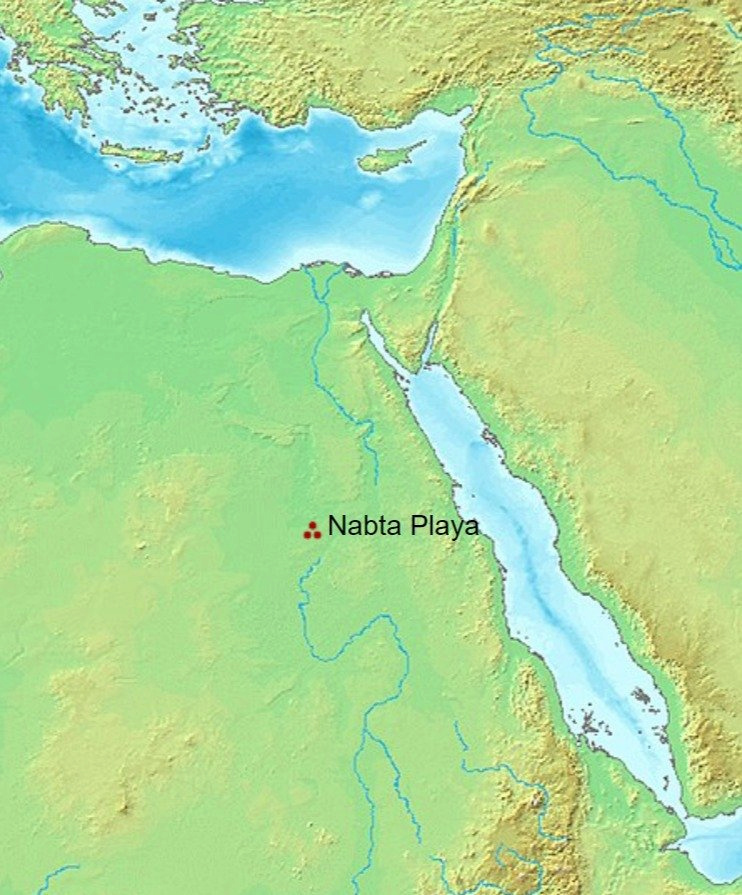Nabta Playa: the oldest astronomical observatory in the world is African

A circle of stones, erected 7,000 years ago in southern Egypt, indicates the North and the summer solstice. It is also a precious testimony to the life of the peoples who settled in this now fossilized oasis.
"The stone circle of Nabta Playa, in southern Egypt, is the oldest known megalithic complex [in the world] which follows an astronomical orientation", affirms the French archaeo-astronomer Karine Gadré, who nevertheless recalls that less than one tenth of the existing archaeological remains on the planet have been unearthed.
First astronomical observatory
Exactly fifty earth revolutions ago, in 1973, guided in the desert by the Bedouin Eide Mariff, the archaeologists Fred Wendorf and Romuald Schild discovered, 150 kilometers west of Abu Simbel, this high place of Egyptian prehistory , which, in addition to being the oldest astronomical observatory in the world, keeps the unique trace of the peoples who, from approximately – 9,000 to – 3,500 BC, occupied this now fossilized oasis.

Verdant Sahara
During this period, the end of the last great glaciation caused the monsoons to rise northwards , and the Sahara, which had become verdant, was the domain of abundant fauna: ideal conditions for the groups of hunter-gatherers who came to establish on the shores of today's mineral lake of Nabta. "Some of them were of sub-Saharan origin, another of North African origin", specifies the scientist.
In 6000 B.C., a new climatic movement brought long arid seasons to the region, prompting part of the populations to practice archaic forms of agriculture and another, which began to engage in agriculture. breeding, to invent pastoral nomadism. Nabta then becomes a center for the celebration of shared harvests and seasonal gatherings of nomads and their herds.

Total desertification
Around – 5,000, its inhabitants began to bury the remains of sheep and cattle during religious funeral ceremonies, say archaeologists. “When these populations will join the Nile valley following the total desertification of the area, they will bring their cult of cattle there, which will give birth to that of the cow-goddess Hathor in the dynastic era, notes the astrophysicist, whose the doctoral thesis was on astronomy in ancient Egypt. It is in this religious context that the erection of the circle of megaliths, around – 4800, must be situated, but also that of around thirty other structures over the course of a millennium”.
Little cousin of Stonehenge
Four meters in diameter, and made up of about forty standing stones, the highest of which reach two meters, the circle of Nabta Playa is far from the monumentality of its distant cousin Stonehenge (2,000 years its junior), located in Salisbury (United Kingdom), but it is exceptional for the two axes clearly traced by the alignments of four pairs of stones higher than the others pointing, one towards the North-South axis, the another in the direction of the summer solstice.
Under each stone of the circle were found the remains of cattle. “The summer solstice was crucial for breeders and sowers because it indicated the start of the monsoons and the flooding of the Nile, explains Karine Gadré. As for the North, several other alignments, in Nabta, point in this direction, which is that where the stars located above the axis of rotation of the Earth always remain visible and never set. The Egyptians called them “the Immortals” and made them the domain of eternal life. We must undoubtedly see in these alignments showing the North the birth of the notion of eternity, which will be developed in the dynastic period”. We can speak of an astronomical observatory in the sense that the axes drawn were used to know where we were at the summer equinox, but also where the North was.
Powerful Civilizations
Around – 3500, the monsoons completely abandoned the Sahara, the site of Nabta became the desert it has always been since, and its peoples were forced to migrate. Some lead their herds towards southern Africa, but many of them settle on the still watered banks of the Nile, with other peoples of the Sahara delivered to a burning sun.

Three hundred years later, around – 3150, King Menes will unify the peoples of Egypt, becoming the first pharaoh of one of the most powerful and brilliant civilizations of antiquity. And, for more than three millennia, its builders will not stop building temples and tombs according to the rhythm of the stars and the sun, like their ancestors in Nabta, nearly 7,000 years ago .
Source: websites Internet

